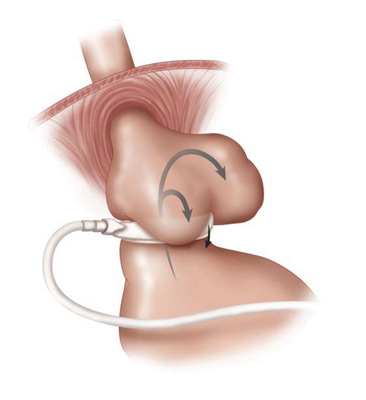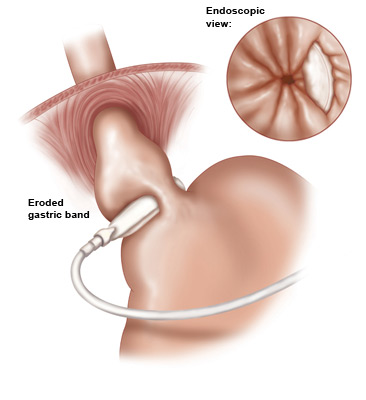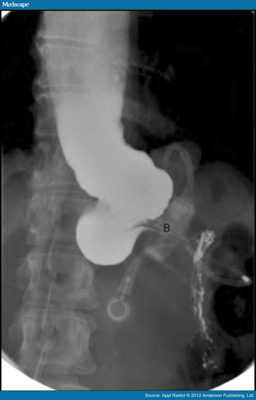
Obesity Surgery Solutions
because life is too short...
Gastric Band Removal
Announcements:
Bariatric Support Group Meeting
 Wednesday, July 15, 5 pm
Wednesday, July 15, 5 pmSharing experiences, recipes, supporting each other
withAndras Sandor, M.D., F.A.C.S.
Where:
ONLINE
REGISTRATION - REQUIRED
Call 781 418-1900
Obesity Surgery Information Seminar
Anytime, at your convenience
The Online Seminar is always open, call our office for a password or install the mobile app

Adjustable gastric banding involves the placement of an inflatable silicone ring that is laparoscopically placed around the upper part of the stomach.
 This way a small pouch is created above the band, which
will become full after a small amount of food. By adjusting the
tightness of the band around the stomach we can control the speed of
emptying of food particles. The promise of the fast and minimally invasive procedure that did not require cutting or stapling of the intestines, with the help of the associated media campaign, quickly led to a large number surgeries and many patient elected this operation over one of the older, better established methods since the early 2000s.
Most did not suffer any complication from the surgery and they were back at work in a few days.
This way a small pouch is created above the band, which
will become full after a small amount of food. By adjusting the
tightness of the band around the stomach we can control the speed of
emptying of food particles. The promise of the fast and minimally invasive procedure that did not require cutting or stapling of the intestines, with the help of the associated media campaign, quickly led to a large number surgeries and many patient elected this operation over one of the older, better established methods since the early 2000s.
Most did not suffer any complication from the surgery and they were back at work in a few days.
As time went by, most people became very comfortable with their gastric band and did not make the necessary medical visits. Gastric banding is not without risks. The band may get lose and slip up or down on the stomach in spite of initially good fixation. This may lead to near complete or complete blockage in the path of food resulting in frequent vomiting and unhealthy weight loss. A band that is too tight around the stomach may slowly erode through the wall of the stomach and appear inside. This may initially only present as pain, like an ulcer-type pain, but may lead to stomach bleeding and bloody bowel movements or vomiting, which can be very scary. Exposure of the band to the gastric contents may result in the infection of the entire tubing and the surrounding tissues. Even a well adjusted band will put an extra stress on the esophagus, which tries to push the food down into the stomach. The narrowing caused by the band presents a relative obstruction, which may lead to a condition called pseudo-achalasia, that is a condition characterized by damaged or complete loss of motility of the esphagus. All the above conitions may necessitate the removal of the band. Most of these do not develop from one day to the next, but slowly, over months to years. A regular, at least annual follow up with the surgeon is recommended who will periodically order x-rays to assess the position of the band and the health of the surrounding organs.

Band slippage

Band erosion

Mega-esophagus with loss of motilty
In certain scenarios repositioning of a displaced gastric band is a viable option, but removal of the band is unavoidable in case there is erosion or the esophagus has significant motilty problems. The band removal procedure usually takes less than an hour and it is done laparoscopically under general anesthesia. The body builds a significant aount scar tissue around the band and dissecting the band out of the scar takes most of the time during the operation.The scar tissue may result in distorsion of the stomach in the future. Conversion of gastric banding to other type of bariatric procedure is possible but the insurance coverage is not automatic and a thorough preparation is necessary prior to any such intervention.
Copyright 2016 Commonwealth Weight Loss, LLC. All Rights Reserved.

